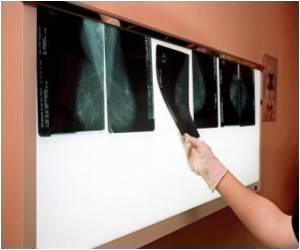A US advisory panel's guidelines recommending women to have mammograms at a later age and at less frequent intervals have been questioned in a new study.

According to an analysis by the researchers at the University of Colorado and the University of Michigan, a woman who receives annual mammograms starting at age 40 can significantly reduce her risk of dying from breast cancer by 71 percent, compared to a woman who receives mammograms every other year starting at age 50.
R. Edward Hendrick and Mark Helvie examined the same risk models used by the task force prior to their issuance of the controversial breast screening guidelines in 2009.
They then compared the recommendations for screening every other year in women aged 50-74 to the American Cancer Society guidelines of screening every year in women aged 40-84.
The researchers found that if women begin yearly mammograms at age 40, it reduces breast cancer deaths by 40 percent. When screening begins at 50 and occurs every other year, it reduces breast cancer deaths 23 percent.
The difference between these two screening strategies comes down to 71 percent more lives saved with yearly screening beginning at 40.
Advertisement
The study appears in the February issue of the American Journal of Roentgenology.
Advertisement











